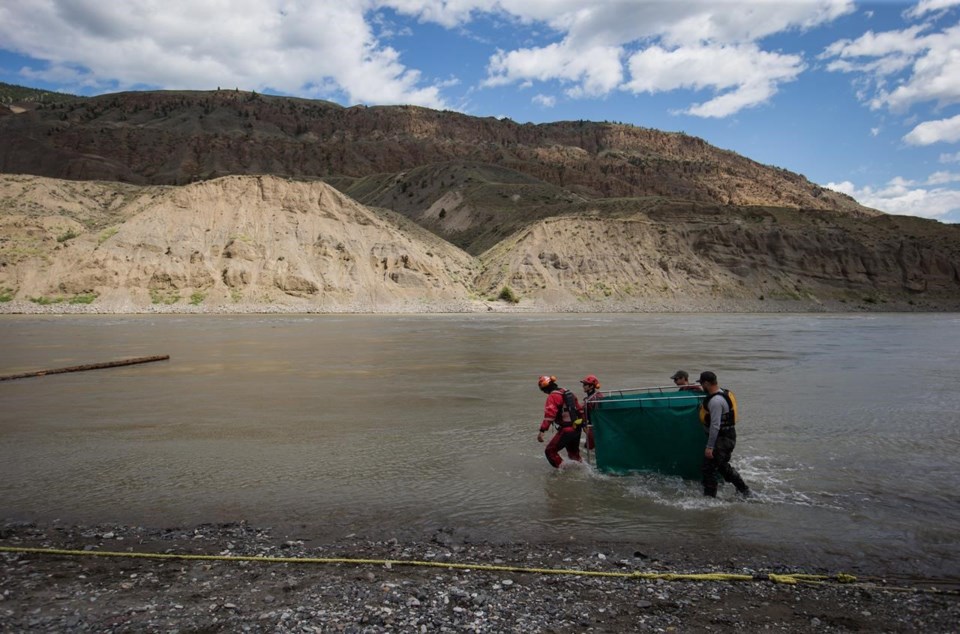VANCOUVER — British Columbia geoscientists are returning to the scene of a massive landslide on the Fraser River to map its effects and assess the risk of future slides on salmon.
The landslide in November 2018 created a five-metre waterfall on the river north of Lillooet, and made it nearly impossible for migrating salmon to reach their spawning grounds.
Jeremy Venditti, principal investigator on the project, said his team of scientists will map the topography in the area using a laser to identify between 20 and 100 possible slide sites along the river.
"We're looking for sites that might be sort of an imminent threat, or where an imminent slide may happen, and then we'll also be identifying locations where they could happen," he said in an interview Thursday.
Venditti said his team set up a field site on the same location of the 2018 slide almost a decade before that, so they'll be able to compare their findings with the 2009 data to see how the slide changed the river and how to better predict these events.
"We felt that, as geoscientists, it was time for us to go and begin investigating where in the Fraser other landslides have happened in the past, but also (where they) will happen in the future, and the effects that they have on flow in the river, fish migration and the genetics of Fraser salmon, which we think have probably been impacted now a number of times by landslides."
Venditti said they'll share the information with the Fisheries Department and First Nations communities, so they can prepare for potential slides and make plans to protect the salmon.
He said possible mitigation could include engineering solutions like building fishways that can help salmon get past blocked passages.
The Fisheries Department said that 85,000 cubic metres of rock fell into the river, stopping many salmon runs from migrating.
After the remote slide was discovered, fish were transported past the site using helicopters, trucks and a so-called salmon cannon until a fish ladder was built, although the department said in July that it was still looking for a more permanent solution.
The department has said the slide is a major factor in some of the worst salmon returns on record in the Fraser River.
This report by The Canadian Press was first published May 12, 2022.
The Canadian Press



